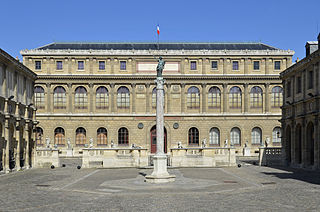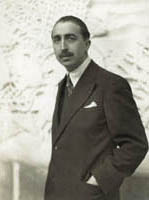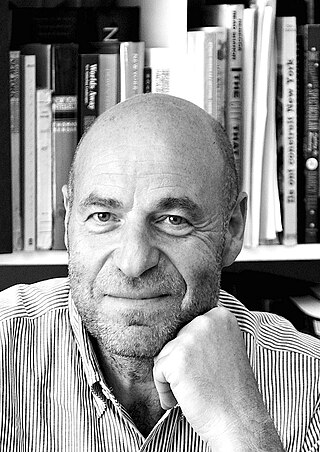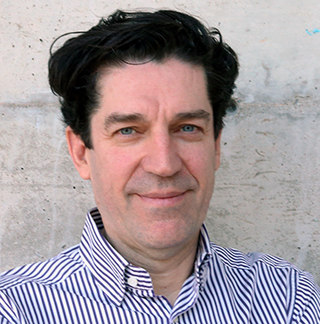Related Research Articles

The Prix Goncourt is a prize in French literature, given by the académie Goncourt to the author of "the best and most imaginative prose work of the year". The prize carries a symbolic reward of only 10 euros, but results in considerable recognition and book sales for the winning author. Four other prizes are also awarded: prix Goncourt du Premier Roman, prix Goncourt de la Nouvelle, prix Goncourt de la Poésie (poetry) and prix Goncourt de la Biographie (biography). Of the "big six" French literary awards, the Prix Goncourt is the best known and most prestigious. The other major literary prizes include the Grand Prix du roman de l'Académie française, the Prix Femina, the Prix Renaudot, the Prix Interallié and the Prix Médicis.

The Prix de Rome or Grand Prix de Rome was a French scholarship for arts students, initially for painters and sculptors, that was established in 1663 during the reign of Louis XIV of France. Winners were awarded a bursary that allowed them to stay in Rome for three to five years at the expense of the state. The prize was extended to architecture in 1720, music in 1803 and engraving in 1804. The prestigious award was abolished in 1968 by André Malraux, then Minister of Culture, following the May 68 riots that called for cultural change.

The Beaux-Arts de Paris, formally the École nationale supérieure des beaux-arts, is a French grande école whose primary mission is to provide high-level fine arts education and training. The art school, which is part of the Paris Sciences et Lettres University, is located on two sites: Saint-Germain-des-Prés in Paris, and Saint-Ouen.
The Prix d'architecture de l'Équerre d'argent is a French architecture award. This prize was launched in 1960 by "Architecture Française" magazine and its director Michel Bourdeau.

Dominique Gauzin-Müller is a French architect and architectural critic, focusing on wood and sustainability in architecture and urbanism. She is the author of several books on these subjects, which have been translated into several languages. She wrote Construire avec le Bois (1999), L'architecture écologique (2001), 25 maisons en bois (2003) and 25 maisons écologique (2005).

Henri Prost was a French architect and urban planner born in Saint-Denis. He was noted in particularly for his work in Morocco and Turkey, where he created a number of comprehensive city plans for Casablanca, Fes, Marrakesh, Meknes, Rabat, and Istanbul, including transportation infrastructure and avenues with buildings, plazas, squares, promenades and parks.
The Fénéon Prize, established in 1949, is awarded annually to a French-language writer and a visual artist no older than 35 years of age. The prize was established by Fanny Fénéon, the widow of French art critic Félix Fénéon. She bequeathed the proceeds from the sale of his art collection to the University of Paris, whose Vice Chancellor chairs the award jury.

The Albert Londres Prize is the highest French journalism award, named in honor of journalist Albert Londres. Created in 1932, it was first awarded in 1933 and is considered the French equivalent of the Pulitzer Prize. Three laureates are awarded each year. The three categories are : "best reporter in the written press", "best audiovisual reporter" and "best reporting book".

Claude Parent, born in Neuilly-sur-Seine, France, was a French architect.
Renée Gailhoustet was a French architect known for her contribution to social housing in the Paris suburbs. She was one of the few female architects of her generation and one of the few prominent architects to build a career in the field of social housing.

Albert Laprade was a French architect, perhaps best known for the Palais de la Porte Dorée. During a long career he undertook many urban renewal projects as well as major industrial and commercial works. A skilled artist, he published a series of sketch books of architecture in France and other Mediterranean countries.

Jean-Louis Cohen was a French architect and architectural historian specializing in modern architecture and city planning. Since 1994 he had been the Sheldon H. Solow Professor in the History of Architecture at New York University Institute of Fine Arts.

Gérard Thurnauer was a French architect and a founding member of the Atelier de Montrouge, an architectural and urban planning studio.
Ducks Scéno is a French company based in Villeurbanne specializing in scenography and museography.
The Three Physicists Prize is a physics prize awarded by the École Normale Supérieure (ENS) in Paris and the Eugène Bloch Foundation. It is named in honour of the physicists Henri Abraham, Eugene Bloch and Georges Bruhat, who were successive directors of the physics laboratory at the ENS and all of whom were murdered in Nazi concentration camps between 1943 and 1945. The prize was established by Bloch's widow.

Anne Lacaton is a French architect and educator. She runs the architectural practice Lacaton & Vassal, with Jean-Philippe Vassal. The pair were jointly awarded the 2021 Pritzker Prize.
Jean-Marie Pérouse de Montclos is a French architectural historian.

Jean-Philippe Vassal is a French architect and academic. He runs the architectural practice Lacaton & Vassal, with Anne Lacaton. The pair were jointly awarded the 2021 Pritzker Architecture Prize.

Jean-Pierre Chupin is a French and Canadian architect, researcher, and architectural theorist who specializes in reasoning by analogy, qualitative practices, architectural competitions and awards of excellence. He is a professor at the School of Architecture, Faculty of Environmental Design, Université de Montréal. He holds the Canada Research Chair in Architecture, Competitions and Mediations of Excellence (CRC-ACME). He coordinates the Laboratory for the Study of Potential Architecture (L.E.A.P) since 2012.
Lacaton & Vassal is an architecture agency founded by Anne Lacaton and Jean-Philippe Vassal in 1987. Their projects include private and social housing, cultural and academic institutions and public spaces. They are particularly well known for their transformations of existing social housing structures and for their economical use of materials and construction techniques.
References
- ↑ "Grand Prix national de l'architecture 2010 décerné à Frédéric Borel". architectes.org (in French). March 24, 2011. Retrieved 21 May 2011.
- ↑ "Pierre-Louis Faloci, lauréat du Grand Prix national de l’architecture 2018".
- ↑ "Atelier d'Architecture Philippe Prost, lauréat du Grand Prix national de l'architecture 2022, et Renée Gailhoustet, prix d'honneur pour l'ensemble".